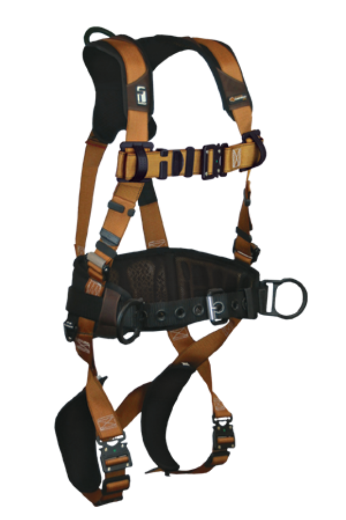OSHA Standards - Top 5
By Trace Nichols
Ah, OSHA. Everybody on sites favorite thing to joke about, but probably the most important factor in keeping worksites safe and people healthy. While the rules of the road may seem cumbersome, these standards are in place for a reason.
Signed into law by Nixon (I am NOT a crook!) in December of 1970, the Occupational Safety and Health Administration is in charge of assuring safe and healthy work environments for all workers and provides education, training and outreach assistance.
We are going to focus on the top 5 construction standards set forth by OSHA.
The first and perhaps most important in my mind is fall protection. In our industry, we are building skyscrapers that are as tall as mountains. When climbing a mountain, all (sane) people wear harnesses and use ropes to mitigate falling. This is no different. Any surface that is greater than 6’ above the surface below it requires a person operating on it to utilize fall protection. These options include guardrail systems, safety netting, and personal fall systems. At Outpost, we offer FallTech harnesses, lanyards, and anchors. Please take a minute to read the ABCs of arrest systems here. We are prepared and knowledgeable about all fall arrest systems, as we take safety very seriously.

Next up, PPE. Now we have all seen the signs going into every single construction site requiring “PPE”. Personal protective equipment is designed to be easy, and super effective. The basic required equipment includes: hard hat, safety glasses, work boots (steel toe normally), high visibility vest / shirt, and long pants. Please always check with each site to make sure you are properly uniformed.

Next up - ladders and stairwells. Seems pretty simple, but understanding completely can prevent big falls and serious injury. We are just going to refer to book on this one, because it nails it (obviously!), “Fixed ladders shall be provided with cages, wells, ladder safety devices, or self-retracting lifelines where the length of climb is less than 24 feet but the top of the ladder is at a distance greater than 24 feet above lower levels. Where the total length of a climb equals or exceeds 24 feet, fixed ladders shall be equipped with one of the following: ladder safety devices, or self-retracting lifelines, and rest platforms at intervals not to exceed 150 feet or a cage or well, and multiple ladder sections not to exceed 50 feet in length.” Subpart D in general industry, under 1910.28, phases in a requirement for employers to have ladder safety or personal fall arrest systems for fixed ladders that extend more than 24 feet, and phases out the use of cages or wells for fall protection. OSHA defines a ladder safety system as,“…a system designed to eliminate or reduce the possibility of falling from a ladder. A ladder safety system usually consists of a carrier, safety sleeve, lanyard, connectors, and body harness. Cages and wells are not ladder safety systems”. Enough said!
Here’s a good example of what NOT to do:

Fire extinguishers seems like a pretty obvious necessity on any site. Why? Well to put out fires of course. Fire can cause irreparable damage to a jobsite and more importantly the people on it, so mitigating is imperative. OSHA states that there must a 2A rating extinguisher every 3,000 square feet. Outpost can also provide stands and access doors.
Last but not least, eye wash stations regulations require that an eye wash and body-flushing facility be within 25 feet of a battery-changing area. It also recommends a washing station within 10 seconds and on the same level.
As always, please consult an expert on all things OSHA. They are strict and can come down with some harsh punishments. Keep in mind, they provide training, so if you have questions or need assistance, reach out! Stay safe, my friends!